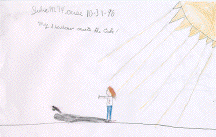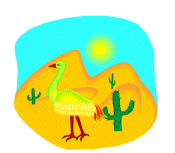Dear Science Teachers,
I plan to incorporate performance tasks from the following sources into upcoming science lessons for 2009-10.
http://pals.sri.com/tasks/tasksk-4.html
http://pals.sri.com/tasks/tasks5-8.html
Here's the site summary:
The performance tasks currently come from several sources: the Council of Chief State School Officers/State Collaborative on Assessment and Student Standards (
CCSSO/
SCASS), Partnership for the Assessment of Standards-based Science
(PASS), the Kentucky Department of Education (
KDE), the New York State Education Department (
NYSED), the RAND Institution (
RAND), the Assessment of Performance Unit (APU), and the Oregon State Education Department (
OSED).
Some tasks cover multiple content areas. All tasks include a Science as Inquiry component.
I wish, wish, wish that I can find some videos and/or illustrations to go with the lessons. cdb

 gers, so that your shadows show a little ring or circle for your hands. Can you, without squatting, move your shadow ring so that it encircles the shiny object on the ground?
gers, so that your shadows show a little ring or circle for your hands. Can you, without squatting, move your shadow ring so that it encircles the shiny object on the ground?
